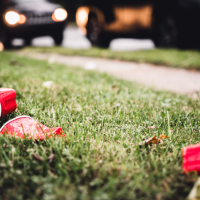At the core of all 3rd Millennium Classrooms courses are evidence-based practices, which are essential to ensuring effective, long-lasting changes. One of the many strategies we use is to Identify Protective Behaviors.
What are Protective Behaviors?
Protective behaviors are strategies to “say no” during high-risk situations and help individuals increase their confidence to make a change. Before identifying protective behaviors, individuals must be aware of risk perception, which is a measurement of how much of a risk they think a certain behavior has. If a person perceives a behavior—such as driving under the influence of drugs or alcohol—as low-risk, they’re more likely to engage in that behavior. The next step is to challenge that perception and counter beliefs with examples of real, high-risk consequences (e.g. injury, death, legal issues). Then, they can begin to identify protective behaviors.
Examples of Protective Behaviors
Protective behaviors aren’t one-size-fits-all. Instead, they’re personalized and are aligned with what a student feels comfortable doing. And if one strategy doesn’t work, there are many others that people can try, in order to find what works best for them.
In our drug and alcohol intervention courses, we help individuals find ways to limit their use or change their environment. Some protective behaviors that have been successful for students are to:
- Hang out with friends who don’t use
- Tell others about their decision not to use
- Remove substances from school and home environments
- Keep busy so they don’t get tempted
- Be physically active at the gym or outdoors
- Avoid situations where drugs or alcohol will be present
- Create a list of things to do when bored
- Learn new skills or try different activities
- Hang out in places where substance use is not allowed
Why Identifying Protective Behaviors is Useful
The strategy of identifying protective behaviors has been used for decades as a way to help reduce alcohol- and drug-use. In addition to coming up with concrete actions, the process of identifying protective behaviors encourages open and honest conversations. While the same protective behaviors may not work for a lifetime, the process of identifying them can be used in future situations when individuals may need to find new strategies or adjust their approach to find what works best.
Ultimately, increasing the use of protective behaviors may help people use less and have fewer alcohol- or drug-related problems in the future. The behavioral strategy is practical, proactive, and helps empower individuals to make healthy choices in all aspects of their lives.
Identifying protective behaviors is just one of many evidence-based ways to reduce high-risk behaviors. Other options include reflecting and evaluating, personalized feedback, risk perception, behavior and skill training, Motivational Interviewing, and many more.




